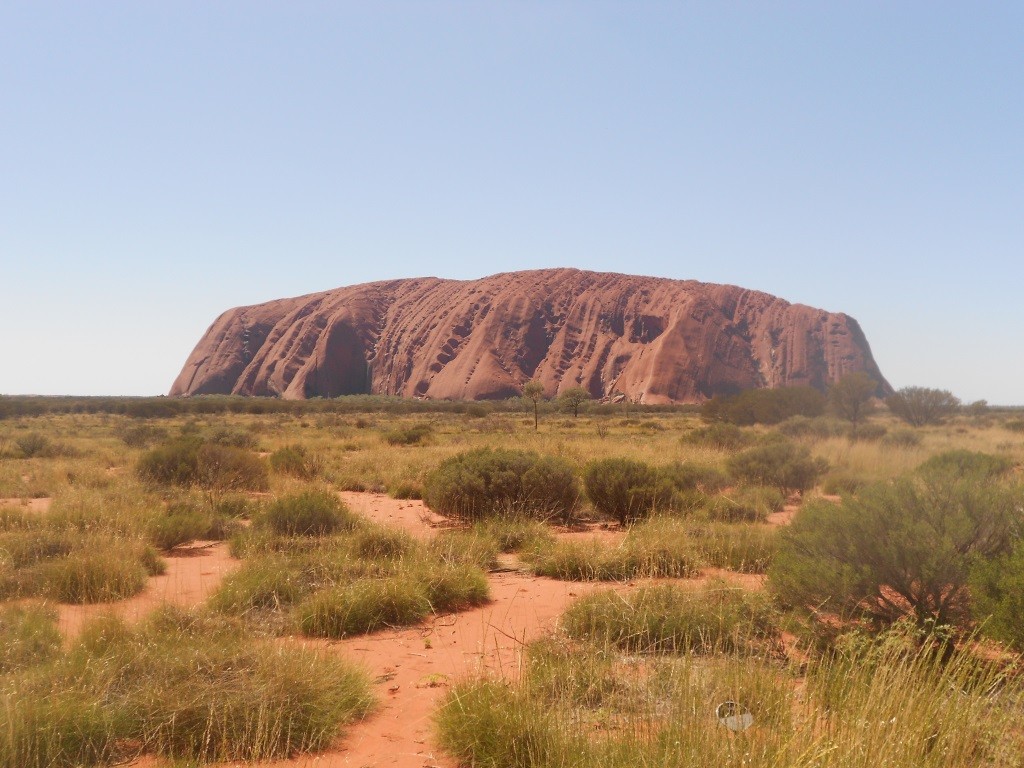
Uluru (aka Ayer’s Rock)
We got our Austrailian adventure kick started with a trip to the Red Centre. This is a vast arrid landscape with two land formations that are stark in contrast to the surrounding area. The first is Kata Tjuta and the other is Uluru, also known as Ayer’s Rock. Both sites are very spiritual to the native Australian people. Uluru had a significant meaning for me, and the only reason I knew about it, was because it was described in a book I read when I was twelve (Atlas of Mysterious Places). The area around Uluru was covered with a red sand, the same color as the rock itself, for which the region has it’s name.
The science lesson on Uluru:
The 300 million-year-old rock is comprised of sand, feldspar (various crystalline minerals) and rock, and originally hailed from a sea floor. A large chunk is above ground today (348m), and the flat top and grooved sides are a result of weathering.
We took a short hike with the kids at the base of the rock. It was a pretty spectacular experience, despite the 100 degree Fahrenheit temperature (yes it was pretty warm, after all it is summer down here) and the flies that surrounded our faces almost the entire time. With the kids, we got a good dose of how disconcerted they were with the flies, and they pretty much wanted to go back to the hotel after the first 100 ft., but like the troopers they are they made the entire hike.
Also, as part of Uluru expereince, we made it out to the eastward lookout to watch the sunset. It was breath taking.
The trip to Uluru was the type of expereince that makes trips like this worth its weight in gold. We, as a family, are able to experience not only things we don’t see every day, but some of the absolute wonders that exist in the world, and how grateful we are to expereince them
